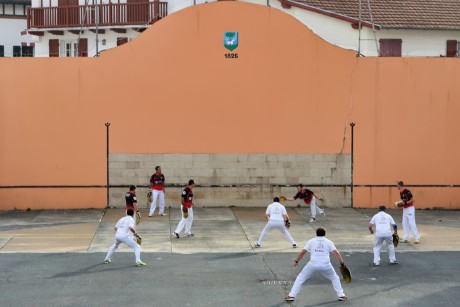In the 19th century, the bridge was moved further upstream, and this led to the creation of a new public square. In 1826, a “jeu de paume” (real tennis) wall was built in front of the new town hall, thanks to the financial support of the inhabitants. This jeu de paume wall or “fronton” allows games of Basque pelota, a sport based on the medieval game of longue paume (long tennis), to take place. Since that time, the play area, or “cancha” in Basque, resonates with the typical sound of the practice, using bare hands or palas (wooden rackets). The Place du Fronton is a place for meeting and leisure, and an essential component of the Basque landscape.

